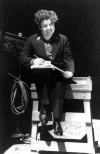Three Years Ago Today
 On January 14, 2009, I was laid off as the editorial director of Sterling Publishing’s Union Square Press, an imprint of narrative nonfiction books I had been recruited to run two years earlier. I recall the anxiety I felt upon being summoned to the office of the HR director; the sick-making sensation that shot through my gut upon receiving the news; that my email was shut off by the time I returned to my office; and the way I was instructed to leave Sterling’s office for the final time, informed that whatever personal effects I couldn’t grab then would be shipped to my home. If you’ve never had this happen to you, I must say it is not something you can prepare yourself for. Even though I was not surprised to get laid off in the middle of the worst financial crisis in eighty years, it nonetheless registered as a deep shock. Later that dark week, I sent an email to all my contacts, headed “Moving on From Sterling,” for that’s what I had already begun to do. In the weeks that followed, I incorporated a business in the state of New York, Philip Turner Book Productions LLC, and began cultivating clients for what would be my new editorial services business. // more. . .
On January 14, 2009, I was laid off as the editorial director of Sterling Publishing’s Union Square Press, an imprint of narrative nonfiction books I had been recruited to run two years earlier. I recall the anxiety I felt upon being summoned to the office of the HR director; the sick-making sensation that shot through my gut upon receiving the news; that my email was shut off by the time I returned to my office; and the way I was instructed to leave Sterling’s office for the final time, informed that whatever personal effects I couldn’t grab then would be shipped to my home. If you’ve never had this happen to you, I must say it is not something you can prepare yourself for. Even though I was not surprised to get laid off in the middle of the worst financial crisis in eighty years, it nonetheless registered as a deep shock. Later that dark week, I sent an email to all my contacts, headed “Moving on From Sterling,” for that’s what I had already begun to do. In the weeks that followed, I incorporated a business in the state of New York, Philip Turner Book Productions LLC, and began cultivating clients for what would be my new editorial services business. // more. . .




